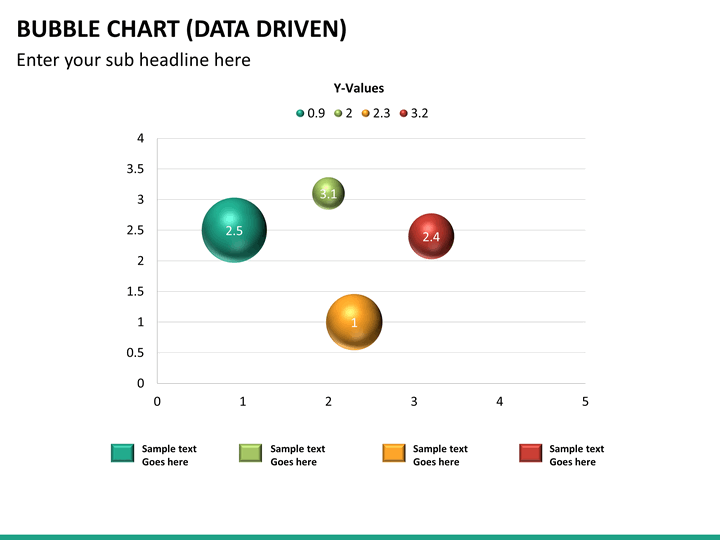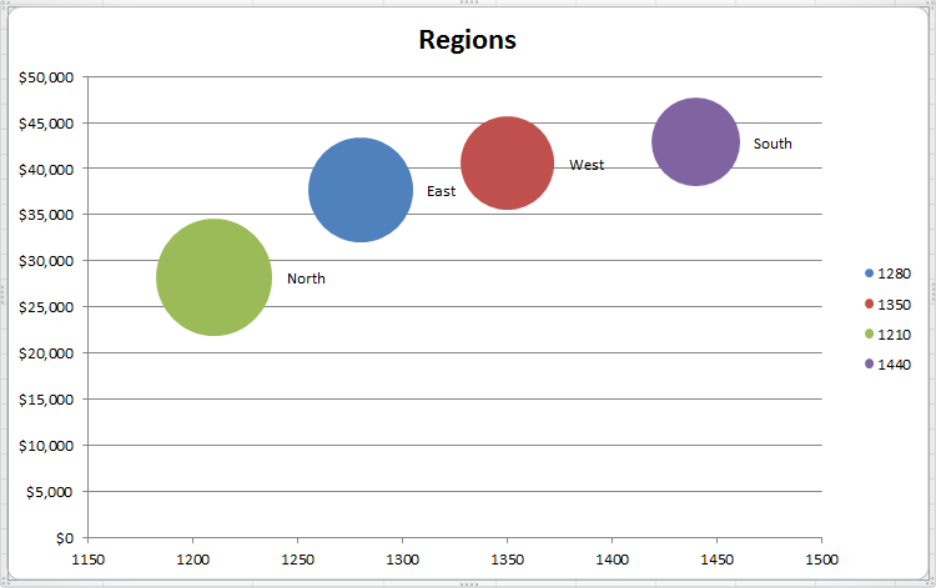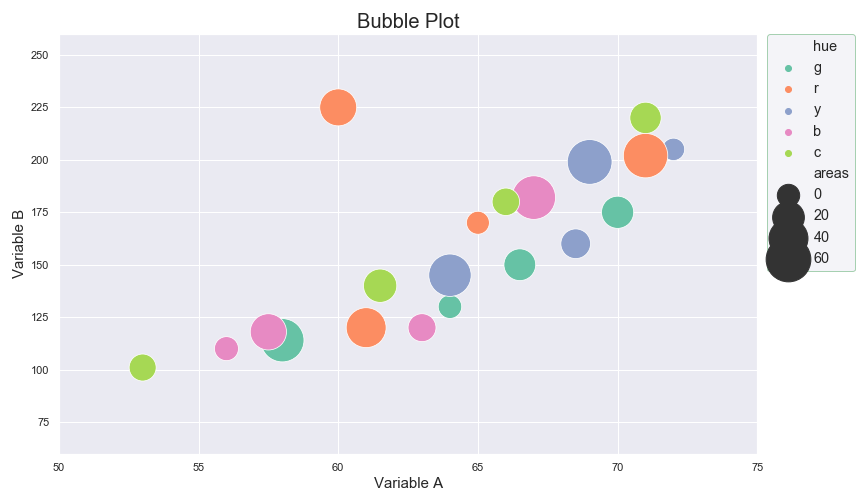

When you create a bubble chart, you can choose to display bubbles in 2-D format or with a 3-D effect. Scatter charts use sets of x values and y values, but bubble charts use sets of x values, y values, and z values.
#BUBBLE CHART SERIES#
Multiple data series Plotting multiple data series in a bubble chart (multiple bubble series) is similar to plotting multiple data series in a scatter chart (multiple scatter series). These values can be in rows or columns on the worksheet, but they must be in the following order: x value, y value, and then z value. Three values per data point Three values are required for each bubble.


In this bubble chart, the number of products is displayed along the horizontal axis, the sales amounts are displayed along the vertical axis, and the market share percentages are represented by the size of the bubbles.Ĭonsider using a bubble chart when your data includes the following: For example, organize your worksheet data as shown in the following picture. To create a bubble chart, arrange your data in rows or columns on a worksheet so that x values are listed in the first row or column and corresponding y values and bubble size (z) values are listed in adjacent rows or columns. Different bubble sizes are useful to visually emphasize specific values. Bubble charts are often used to present financial data. The sizes of the bubbles are determined by the values in the third data series. By doing this, we avoided mixing categories that are not necessarily mutually exclusive a person could fall under the ‘Under 45’ bucket and also under the ‘Women’ bucket.You can use a bubble chart instead of a scatter chart if your data has three data series that each contain a set of values. As you can see, we also split the categories into two groups, age and gender, taking advantage of the interactivity of Infogram’s charts. A “boring” column chart would have done a much better job here. Furthermore the size of the bubbles is really hard to compare, thus making it hard to understand. There is no “third dimension” here to visualize.

The use of bubbles in this chart doesn’t add any additional information. It might be tempting to use fun bubbles rather than boring bars, but there is nothing worse than using charts just because of how they look, like in this example explained by research scientist Robert Cosara: You should always provide some background information before presenting a bubble chart to explain the issue. Or we can find out what products a company should focus on, as we previously explained with the car sales example.Īs you see static bubble charts are good for visualizing situations, patterns and correlations, but they can’t explain the why of the situation, and how it occurred. In the same way, we can show if putting a higher price on cigarettes has prevented people from smoking and decreased the lung cancer cases per capita. No wonder Rosling used it to explore how development factors impact health. When to use a bubble chartīubble charts can facilitate the understanding of social, economical, medical, and other scientific relationships. With animated motion charts you can go even further and display car sales trends over time. You can even assign different colors to each car type to show, for example, that despite the fact that fewer units of premium cars get sold, the overall revenue they generate is higher.


 0 kommentar(er)
0 kommentar(er)
